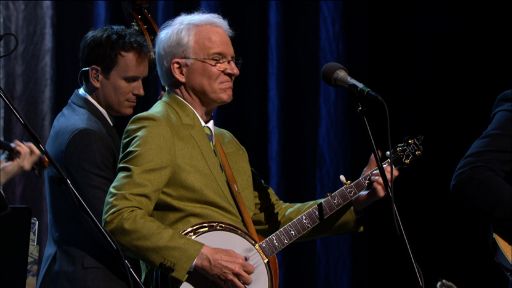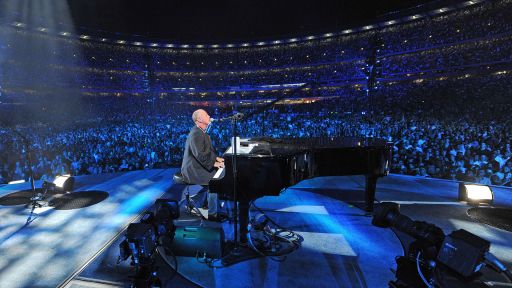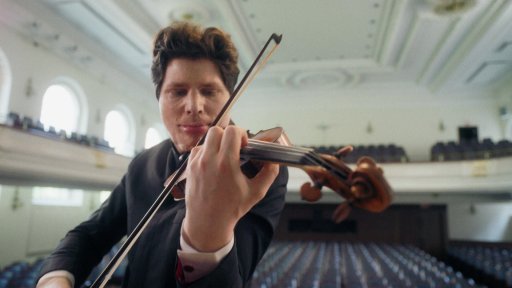Follow Scott Yoo as he goes behind the scenes of Cirque du Soleil for a session with the circus’ music director, Aaron Guidry.
Features
Cirques acrobats move at superhuman speed.
And I wanted to talk to the guy with a challenging job of making music for their performances - Aaron Guidry.
So I've been thinking a lot about Paganini.
And so I dusted off this old Paganini exercise, a caprice, that I had won a competition with when I was a teenager.
And it's very hard because he makes you play a duet... ♪♪ Except he has you play a duet with yourself.
♪♪ And usually when you do that, those are octaves.
You do one -- index, pinky -- but it's going too fast.
So you have to do index, ring finger, middle finger, pinky.
And so, you know, you have to have daddy long legs fingers in order to pull this off.
Let me show you a little bit.
All right.
Go for it.
♪♪ ♪♪ ♪♪ Okay.
Well, anyway, I was more or less, but, you know, I'm actually interested in what you do because you have musicians on this side of the stage, you've singers and then all the way across, you have more.
I know!
- It's just nuts!
There's so much going on, you know?
And basically my job as the musical director is to make sure that we have music and make sure that that music lines up with what's happening on the stage.
But it's always a little bit different.
It's always a little bit different because the acrobats make it a little bit different and we as the band have to react to that.
So maybe I need a little bit more improvisation tonight or were pulling in this section out tonight or whatever we're doing, but it's all done live and in time to make it happen.
Show me.
- All right, check it out.
Okay.
Hey, guys, let's start at the tension in fast bungee.
Stand by.
Tension, two, three... ♪♪ Voice, two, three... ♪♪ So that's an example of the end of one of our acts, the Bungee Act.
And so you're watching what's happening.
Definitely.
And the acrobats are taking their cues from the music, correct?
A little bit of both.
A little bit of give and take.
For example, when Sarah at the very last trick-- a planche, right -- the music gets all tension You see that teeter board going and you see there's a guy -- theres a guy on his on his shoulders.
You know something's coming.
You see Sarah getting up there.
Here she goes.
She's about to get on.
I count to three.
That's super important.
One, two, three.
I hit this pad, and that cues the band for a break.
Two, three, and... [drum sound] And we stop, and she's landed - tada.
And everybody [crowd noise].
The crowd goes bazonckers.
- And you count to three because in your experience, that's the amount of time she needs to get from the board onto somebody's shoulders.
Yes.
Three plus another four for the band to be cued.
So it's seven total.
- Really?
So like, if she gets on early, then, I subtract.
She goes on the later, I add.
So we're going to pretend like she gets on the board.
I'll cue you when she -- I'll cue you because you're going to do it.
All right?
How am I going to do that?
Well, you're going to come over here and hit this golden pad.
That thing?
Okay.
All right, here we go.
Standby, everybody, lets start the tension.
Here we go.
Tension.
Two, three... ♪♪ Stand by.
Stand by Scott.
Getting close.
Here she comes.
Go.
One, two [Scott hits drum] Break, two, three and... [Drum snare] Nailed it.
Wow.
So thats the kind of timing that you have to do.
And those kind of examples, that little example all over the show.
I got to tell you, as somebody who has seen this show, a bunch of times, I mean, I'm a musician, but even for me, it never occurred to me that somebody is doing that.
You're doing that.
- The man behind the curtain.
It is so much more thrilling because you're doing that because the music is synchronized... Thats the greatest compliment to say that... - Its true!
Thank you.
I appreciate it.
You May Also Like









